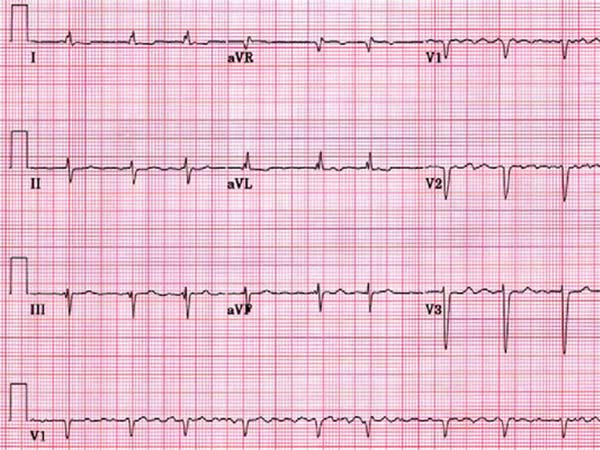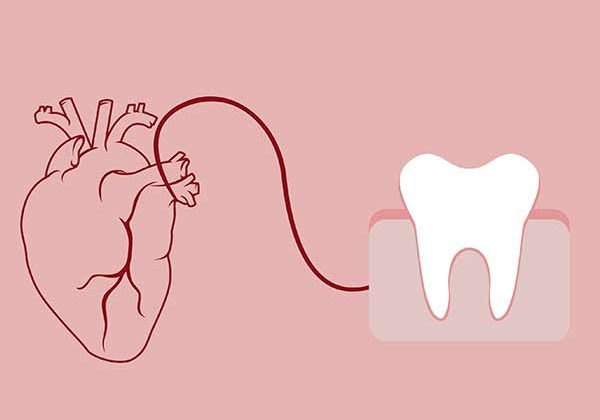People with atrial fibrillation live longer with exercise
“Regular endurance training and good fitness seem to protect against serious cardiovascular events and early mortality for people diagnosed with atrial fibrillation,” says exercise physiologist Lars Elnan Garnvik.
Half the risk
Garnvik recently completed his doctorate at the Norwegian University of Science and Technology (NTNU). His latest article was recently published in the prestigious European Heart Journal. Garnvik and his colleagues in the Cardiac Exercise Research Group (CERG) have investigated how physical activity and good fitness levels are linked to future health risks for men and women who have been diagnosed with atrial fibrillation.
“The results show that people with atrial fibrillation who meet the authorities’ recommendations for physical activity generally live longer than patients who exercise less. They also have almost half the risk of dying from cardiovascular disease,” says Garnvik.
The minimum recommendation is to be physically active for 150 minutes of moderate intensity or 75 minutes of high intensity exercise each week. Moderate intensity means getting out of breath and sweaty, but still able to carry on a conversation. At high intensity you are so out of breath that you can’t speak in longer sentences.
“We found that both moderate and high intensity training are associated with significantly reduced risk,” says Garnvik.
Same risk as inactive healthy individuals
People with atrial fibrillation have a higher health risk than same-aged individuals who do not have the disease. The new NTNU study also shows that inactive men and women with atrial fibrillation generally die earlier than inactive men and women without the condition.
“On the other hand, the risk for physically active participants with atrial fibrillation wasn’t higher than for physically inactive healthy people in the same age group,” Garnvik says.
The study includes a total of 1117 people who participated in the Trøndelag Health Study (HUNT Study) between 2006 and 2008. All had a confirmed atrial fibrillation diagnosis, and their average age was over 70 years. Garnvik used national health records to find out who died or was impacted by cardiovascular disease in the years leading up to and including 2015.
“It’s worth noting that this is an observational study, so the results cannot be used to establish definite causal relationships. However, we’ve tried to isolate the relationship between exercise and health risk as much as possible by adjusting the analyses for all other known differences between people who exercise a lot and a little,” he says.
Staying in shape is important
In the study, the researchers calculated the condition of atrial fibrillation patients with CERG’s widely used Fitness Calculator. It was found that the participants with the lowest calculated fitness levels had the highest mortality risk during the follow-up period.
“For every 3.5 point increase in fitness score, the risk of dying dropped by 12 per cent over the next eight to nine years. In the case of cardiovascular-related deaths, this risk reduction was 15 per cent,” Garnvik says.
The fact that fitness is important is not new information.
“Both our research and other research suggests that staying in shape can be even more crucial to health than the level of physical activity. Our genes determine some of our fitness, but the vast majority of people can improve on their gene pool by exercising properly. This is also the case for individuals with atrial fibrillation,” he says.
How to exercise?
Training in a way that actually influences your fitness level is especially important.
“Our research team has repeatedly shown that high-intensity interval training is more effective than moderate exercise for improving fitness. This is true for both healthy individuals and people with different types of lifestyle diseases,” says Garnvik.
No specific training recommendations for people with atrial fibrillation have been published yet. Last year, however, another CERG researcher completed his doctorate on the same topic. Cardiologist Vegard Malmo’s studies show that interval training using the 4 × 4 method is very effective for this group as well.
“The findings suggest that aerobic interval training has the same beneficial effect on risk factors in people with atrial fibrillation as in patients with other cardiovascular illnesses,” says Malmo.
Four months of regular interval training reduced both the recorded length of the fibrillationand the symptoms of the disease. In addition, the exercise provided better quality of life and heart function. And last but not least: the training resulted in a marked increase in fitness.
“Lifestyle changes, including exercise, should be key for treating atrial fibrillation,” Malmo says.
What if you already train a lot?
Biathlete Ole Einar Bjørndalen had to end his sports career due to atrial fibrillation. Cross-country ski racer Marit Bjørgen has experienced episodes, and the same goes for several other high-level Norwegian and international endurance athletes.
“We know that very high levels of exercise over many years can increase the risk of developing atrial fibrillation. However, this is not something most of us need to worry about. Too little physical activity is a much greater cause of atrial fibrillation in the population than people exercising too much,” says Lars Elnan Garnvik.
The people who exercise the most probably don’t tend to be the first to get scared and stop exercising if they have anepisode of fibrillation. A study of older people who participated in the Birkebeinerrennet – an annual long-distance cross-country ski marathon held in Norway – shows that two-thirds of these super-exercisers continue to train actively even after being diagnosed.
And they can do that with good conscience. Recently, Vegard Malmo and other Norwegian experts published an overview article on exercise and atrial fibrillation and concluded by saying:
“We believe that most athletes with non-permanent atrial fibrillation can exercise without any restrictions when their heartbeat is normal. If they experience symptoms during exercise, the natural response will be to stop the activity.
Source: The Norwegian University of Science and Technology (NTNU)
Garnvik, L. E., Malmo, V., Janszky, I., Ellekjær, H., Wisløff, U., Loennechen, J. P., & Nes, B. M. (2020). Physical activity, cardiorespiratory fitness, and cardiovascular outcomes in individuals with atrial fibrillation: the HUNT study. European Heart Journal.
Malmo, V., Nes, B. M., Amundsen, B. H., Tjonna, A. E., Stoylen, A., Rossvoll, O., Wisløff, U., & Loennechen, J. P. (2016). Aerobic interval training reduces the burden of atrial fibrillation in the short term: a randomized trial.. Circulation, 133 (5), 466-473.
Myrstad, M., Malmo, V., Ulimoen, S. R., Tveit, A., & Loennechen, J. P. (2019). Exercise in individuals with atrial fibrillation. Clinical Research in Cardiology, 108 (4), 347-354.
Full bibliographic information
Garnvik, L. E., Malmo, V., Janszky, I., Ellekjær, H., Wisløff, U., Loennechen, J. P., & Nes, B. M. (2020). Physical activity, cardiorespiratory fitness, and cardiovascular outcomes in individuals with atrial fibrillation: the HUNT study. European Heart Journal.





